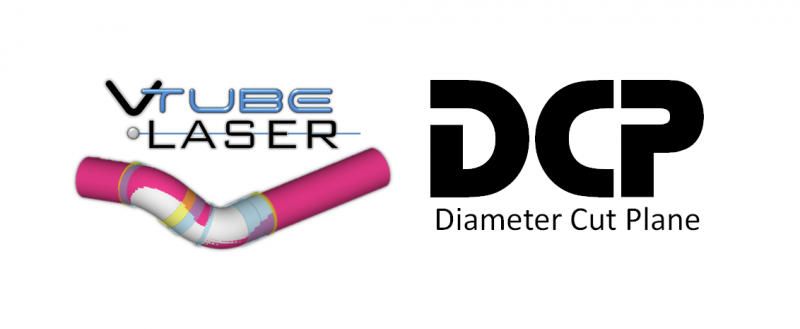DCP - Diameter Cut Planes
VTube-LASER Diameter Cut Planes or the "DCP" feature in VTube-LASER, solves a scanning issue where multiple objects are in the view of the laser scanner at one time - but you must scan only one straight.
In previous versions, the only easy solution was to switch to using the ball probe in those sections where many objects were close to the tube straight being measured.
- VTube-LASER Version: 2.6
- Date Released: July 25, 2016
- Back to VTube-LASER
- Back to VTube-LASER v2.6
- See Related Subject: How to Measure Tubes Attached to an Evaporator
Overview of DCP
Measure Across Several Diameters - VTube will find the correct straight
However, this new feature lets you scan across several diameters or objects of any kind - and still AUTOMATICALLY scan in the single diameter you intend to measure.
The effect on the operator is to reduce stress and increase measuring speed drastically. See this image to understand the basic idea of the DCP feature and how it sorts detects the single diameter you intend to measure:
Wirebending Applications
The feature was developed to solve a need when measuring wire bent parts. The orange part shown below is a sample test piece that is formed from 0.2 inch diameter wire. This is a small part that can sit on a tablet (see the black tablet for scale). When measuring this part the FARO scanner stripe often crosses four straights at the same time.
Illustration of the Issue for Small Parts
Imagine the HD (blue) laser stripe measuring one of these four straights. In order to measure one, it is very hard to orient the beam in a way that scans only one straight. See this image to show the easiest way to measure straights 1, 3, 9 and 12:

In previous versions of VTube-LASER, this was not possible because the data from the four straights would have averaged into one large diameter, or, more likely, VTube would return an error during centerline calculation.
However, the DCP feature solves this issue by givng the operator a way to cross all four straights by following some simple rules that allow VTube to sort out and select the one straight that you intend to measure.
DCP is Not Used in End Scans
Even if DCP is enabled, it is never applied to END SCANS since end scans are not actual DIAMETER measurements. End scans only respond to regular cut planes.
Tutorial on How DCP Works
These two slides illustrate how the DCP feature works:
Scanner Orientation Matters in DCP
The key is to remember that the scanner orientation determines which straight the DCP encounters first.
See this idea illustrated in the serpentine part. The orange arrow is the orientation of the scanner.

- DCP Selection Rule 1: The scanned points are selected based on the orientation of the Diameter Cut Plane relative to the straight.
Maximum Cloud Width Matters in DCP
The yellow ellipsis represents the Maximum Cloud Radius.
The second key is to remember is:
- DCP Selection Rule 2: The scanned points are selected based on the Maximum Cloud Radius value.
DCP Setup Warning Windows
VTube has warning windows that help you know when the DCP feature is setup in a way that will cause VTube-LASER to return no scanned points.
- If you activate the DCP feature and the maximum cloud radius value goes to ZERO, then these warnings will appear.
- If you load a project with the DCP feature setup with the maximum cloud radius value at ZERO, then one of these warnings will appear.
Other
- Back to VTube-LASER
- See Related Subject: How to Measure Tubes Attached to an Evaporator






